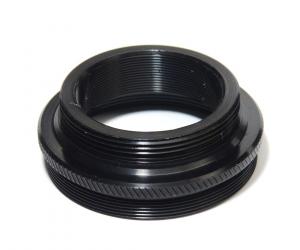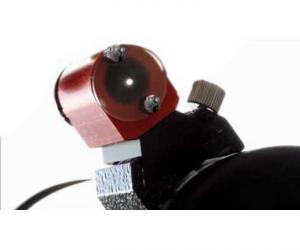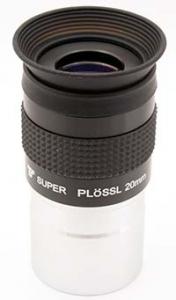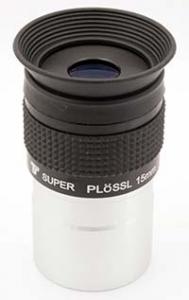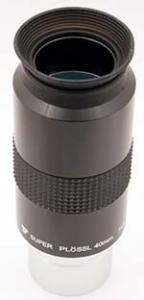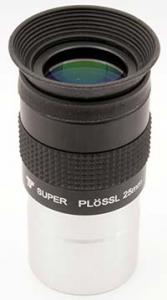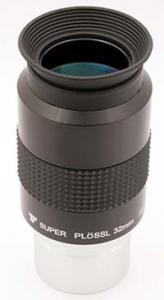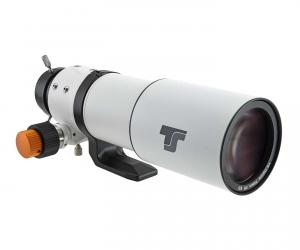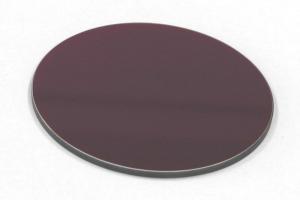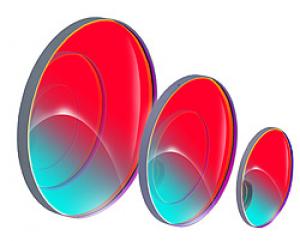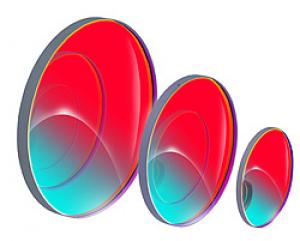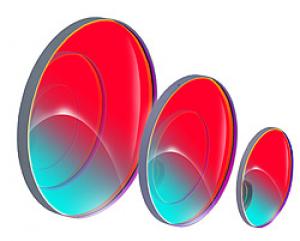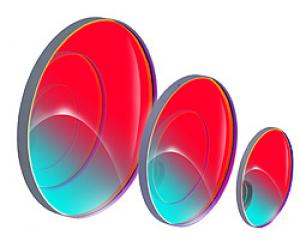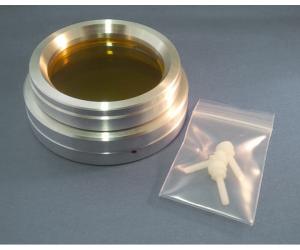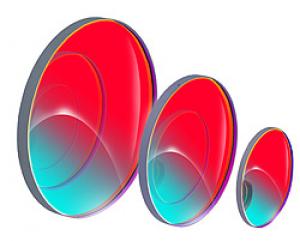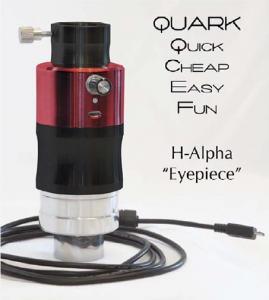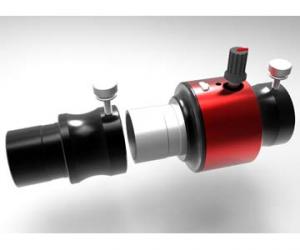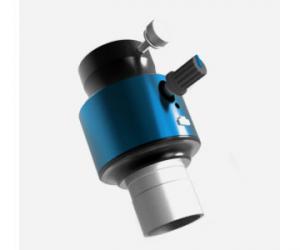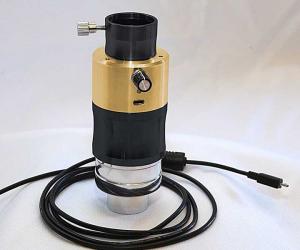- Telescopes
- Overview:
Telescopes - Achromatic Refractor
- Apochromatic Refractor
- Overview:
Apochromatic Refractor - ED Refractor - less color aberration than an achromatic
- SD APO - color free 2-element APO objective
- EDT APO - 3 element ED objective
- High End APO with 3-element APO objective - no color aberation
- Flatfield APO with flat field for Astrophotography
- All Apos and EDs from all manufacturers - large overview
- TS APO and ED from Japan with high quality optics
- Overview:
- Newtonian Telescopes
- Dobsonian Telescopes
- RC Ritchey Chretien Telescopes
- Casssegrain Telescopes
- Reflektor Telescopce with Lens Correcture
- Maksutov Cassegrain Telescopes
- GoTo Telescopes
- Solar Telescopes H-Alpha
- Overview:
- Mounts Tripods Rings Rails Power Supply ...
- Overview:
Mounts Tripods Rings Rails Power Supply ... - Mounts Equatorial with GoTo
- Mounts Equatorial without GoTo
- Mounts Azimutal with GoTo
- Mounts Azimutal without GoTo
- Mounts GoTo - Harmonic Drive
- Travel mounts for astro imaging
- Tripods Piers Polar Wedges
- Mount Control & Electronics
- Dovetail Clamps, Plates and Mount Adapters
- Tube Rings
- Power Supply
- Counterweights Balance Weights
- Mount Accessories - Other
- Overview:
- Telescope Accessories
- Overview:
Telescope Accessories - Eyepieces
- Barlows & Reducer Lenses
- Diagonal Mirrors and Prisms
- Binocular Viewers
- Finder Scopes
- Telescope Collimation and Test
- Cleaning Tools
- Transport and Storage
- Dust protection for Telescopes & Accessories
- Stray Light Protection
- Dewcaps and Heater
- Focusers, Adapters, Motorfocus
- Telescope DIY & Improvement
- Other telescope accessories
- Replacement Parts
- Overview:
- Filters
- Overview:
Filters - Color Filters and Color Filtersets
- Nebular Filters for Visual Observing
- Neutral-Density and Polfilter
- Photo Narrowband Nebular Filters
- Photo Broadband Filters
- Photo Planetary Filters
- Photo R-G-B and IR Cut Filters
- Photo - Filtersets
- Photometric Filters
- Clip Filter for DSLR Cameras
- Filter Wheels and Filterslider
- Solar Filters for white light
- Solarfilter for H-Alpha and Calcium
- Overview:
- Adaptors
- Overview:
Adaptors - Adapter 1,25" and 24,5mm
- Adapter 2"
- Adapter T2 - M42x0.75
- Adapter M48x0,75
- Adapter M54
- Adapter SC
- Adapter M63
- Adapter M68
- Adapter to other Threads
- Adapter Extensions
- Adapter camera bayonet
- Adapter Objective Filterthread
- Adapter Quick Changing , Rotation
- Adapter Eyepiece Projection
- Adapters Tilting
- Overview:
- Astrophotography and Photography
- Overview:
Astrophotography and Photography - Cooled Cameras
- Cameras without Cooling
- Deep-Sky Cameras uncooled
- Set-Offers Camera, Filter, Wheels
- Acessories for Cameras
- Travel mounts for astro imaging
- Imaging Correctors for Telescopes
- Autoguiding Cameras & Sets
- Everything for Guiding
- Focusing aids - Bahtinov mascs
- Flat Field foils and boxes
- Lenses for Cameras
- Piggyback Camera Holder
- Camera Bags, Photocases & more
- Digital Camera and Smartphone Adapter
- Other photo accessories
- Overview:
- Binoculars, Spotting Scopes, Microscopes, Range Finders
- Overview:
Binoculars, Spotting Scopes, Microscopes, Range Finders - Roof Prism Binoculars
- Binoculars with Porro prisms
- Binoculars from 100mm Aperture
- Binoculars with 1,25 inch eyepieces
- TSMX APO Binoculars
- Binoculars for Astronomy
- Binoculars Hiking Bird watching
- Monoculars - Opera Binoculars
- Accessories for Binoculars
- Spotting Scopes
- Range Finders
- Microscopy
- Bags for Phototripods & Binoculars
- Overview:
- Phototripods and Binomounts
- Books, Software
- Overview:
Books, Software - Books for Astronomy Beginners
- Star Charts and Planispheres
- Books about our Solar System
- Observing Tips for Amateurs
- Popular Astronomy Literature
- Teaching material
- Astrophotography books
- Telescopes, Observatories, Construction
- Calendars Yearbooks
- Software, Star Charts
- Books for Microscopers
- Books Nature and Animals
- Nature Photography TimeLapse
- Overview:
- Night Vision, Magnifiers, Weather, Domes & more
- Beginner Astronomy and Gift Ideas
- Second Hand & Special Offers
- New products
Manufacturer: DayStar .. Solar
Product number: DSZ4P
EUR1611.00new
EUR 1.611,00
incl. 19 % VAT (DE)
The VAT indicated refers to that applicable in Germany. After logging in, the VAT amount is adjusted to the applicable VAT of the stored delivery country. Therefore, the final price may vary accordingly.
excl. 11.95 € shipping costs (DE)
more details to the shipping costs ...Please log in to calculate shipping costs to your country.
There are no reviews for this product
- Details..
- Technical data..
- In the box..
- Reviews..
- Manufacturer infos..
- Safety informations..
Daystar Instruments QUARK - eyepiece side H-alpha Filter System for Prominences
The first one-piece H-Alpha filter system for refractors from f/9 to f/4This new, all-in-one design marries high quality components of a telecentric barlow, adapters, snouts and Daystar hydrogen alpha filter into one simple assembly. Through design efficiency and optimization, now users can enjoy the known high quality optics of DayStar* at an affordable price.
For use on refractors of f/4 to f/9, the user needn´t worry about optical configurations. Just insert in your diagonal, add an eyepiece and view.
The QUARK contains a custom Daystar Instruments 4.2x telecentric Barlow lens fully optimized in coatings and optical design specifically for the Hydrogen Alpha wavelength. This highly specialized telecentric lens offers superior field flatness.
Exact filter bandpass will vary based on final telescope application, so QUARK assemblies are qualified to show either prominence or surface (chromosphere). No specific FWHM bandpass is designated. Now observers can buy a filter based on their desired observing goals instead of their budget. Choose prominences or surface (Chromosphere) detail.
The fully optimized design eliminates the need for any adapters. It´s all combined in one lightweight eyepiece sized device. The new, compact design configuration eliminates unnecessary components, weight and associated costs. We even reduced power consumption, so the Quark can now operate all day off a small, palm-sized optional battery pack. Baffles have been added to increase contrast and AR coatings are optimized for the 656 nm wavelength.
Versions
2 Versions: Prominence or Chromosphere - this version is for Prominences.Prominence: prominences of the sun
Chromosphere: H-Alpha details on the surface of the sun (solar disc)
Necesssary measures for different telescopes
This is how Teleskop-Service hands over the Daystar filters to the star friend:
Every Quark solar filter is tested on the sun before it is stored in our technique. We have a reference filter for this purpose. Only filters that pass this test go to our warehouse for shipment. Filters that do not pass the test are returned to DayStar with a request for exchange. This way we guarantee you will enjoy your DayStar H-Alpha filter from the beginning.Attention at low temperatures:
A Fabry-Pérot filter may never freeze. Being made for working at a very specific temperature, a complex filter should not be exposed to temperatures below 5 °C (40 °F).The immersion oil which connects the optical elements can solidify. Then, it presses them apart and the coatings of the to 1/200 lambda plane-parallel polished etalon plate suffer damage.
Also, the adhesion of the dielectric coating is extremely stressed, resulting in an accelerated intercalation of water into this layer.
This is regarded as mistreatment and forced ageing of the filter, voiding warranty.
For this reason, we recommend putting the filter into a case, best with drying agent, and storing it in the warm home. Thus you will enjoy the filter for many years.
Features at a glance
| Transmitted wavelength: | 656.3 nm |
| FWHM: | 0.8-0.6 Å |
| Tuning range: | +/- 0.5 Å with detents at every 0.1 Å |
| Connection at telescope side: | 1.25", 2", M48x0.75 thread (female) |
| Connection at eyepiece side: | 1.25" with brass compression ring |
| Beam widening: | telecentric 4.3x 2-element Barlow, baffled, optimized for 656 nm |
| Blocking filter: | 12 mm diameter |
| Clear aperture: | 21 mm |
| Optimal focal ratio range: | f/8 to f/4 |
| Full solar disc visible up to focal range (telescope): | approx. 450 mm |
| Power supply: | USB, 5 V, 1.5 A |
| LED indicators: | Power, warming, ready, fault |
| Minimum temperature: | 5 °C |
| Necessary for apertures of more than 80 mm: | UV/IR ERF protection filter in front of the objective |
Solar images from Jozef Cukas
made trough a 100/1000mm and DayStar QUARK H-Alpha version for Chromosphere


[if gte mso 9]>
Normal
0
21
false
false
false
DE
X-NONE
X-NONE
MicrosoftInternetExplorer4
Congradulations!!!!
The new QUARK H-Alpha eyepiece filter by Daystar
... a first review by Andy Murner
For a first test, we used the TS Apo 115 S. It took up to 10 min for the filter to reach the correct temperature (indicated by a LED color change to green). In this time, you can set up the telescope.
The "Chromosphere" version shows the solar surface with rich contrast and all structures like filaments, sun spots, active regions as expected in H-Alpha. Picture brightness is comfortable, not too dark. A black towel was not necessary. As expected, Spicules and Prominences could be seen, too.
The "Prominence" version shows a brighter picture, but with less contrast on the solar surface. Prominences however are amplified and can be clearly seen in front of the background. Surface structure could still be seen with good structure.
115 mm aperture deliver enough resolving power to make fine structure visible and to walk along the spicule forest with 200x magnification in detail. With the 4.3x focal length extension, you can use long focal length eyepieces with good viewing comfort and still reasonable magnification.
Both models offer a very good value for the money and will find their place amoung the solar observers for sure.
 © by Chris Wöhrle
© by Chris Wöhrle
Captured with the TS 115 mm Apo and Quark Prominence H-Alpha Filter
The iPhone has just been held to the eyepiece.
made trough a 100/1000mm and DayStar QUARK H-Alpha version for Chromosphere


[if gte mso 9]>
Congradulations!!!!
The new QUARK H-Alpha eyepiece filter by Daystar
... a first review by Andy Murner
For a first test, we used the TS Apo 115 S. It took up to 10 min for the filter to reach the correct temperature (indicated by a LED color change to green). In this time, you can set up the telescope.
The "Chromosphere" version shows the solar surface with rich contrast and all structures like filaments, sun spots, active regions as expected in H-Alpha. Picture brightness is comfortable, not too dark. A black towel was not necessary. As expected, Spicules and Prominences could be seen, too.
The "Prominence" version shows a brighter picture, but with less contrast on the solar surface. Prominences however are amplified and can be clearly seen in front of the background. Surface structure could still be seen with good structure.
115 mm aperture deliver enough resolving power to make fine structure visible and to walk along the spicule forest with 200x magnification in detail. With the 4.3x focal length extension, you can use long focal length eyepieces with good viewing comfort and still reasonable magnification.
Both models offer a very good value for the money and will find their place amoung the solar observers for sure.
 © by Chris Wöhrle
© by Chris WöhrleCaptured with the TS 115 mm Apo and Quark Prominence H-Alpha Filter
The iPhone has just been held to the eyepiece.
| Manufacturer / Importeur: | Teleskop-Service Ransburg GmbH |
| Street: | Vo-Myra-Str. 8 |
| ZIP / City: | 85599 Parsdorf |
| Country: | Germany |
| Telefon number: | +49 89 99228750 |
| Email: | info@teleskop-service.de |
| Website: | www.teleskop-express.de |
Safety informations: PDF Download
Recommended accessories
Adaptors
Customers who bought this product also bought...
Eyepieces
Super Plössl - 40mm Focal Length - 1.25" - 46° FOV - FMC
EUR 44,00RRP EUR 49,00you save 10.2% (EUR 5,00)
General Accessories
TS-Optics 70 mm f/6 ED Travel Refractor with modern 2" RAP Focuser
EUR 399,00RRP EUR 498,00you save 19.9% (EUR 99,00)
Photo Acessories
Similar Products
Reviews
Written by Steffen Wetzel
on 2023-01-25
"Ich nutze das Filtersystem mit einem *** und einen *** von ***. Mit dem 71/420 und einem 40mm-Okular wird die Sonne als komplette Scheibe dargestellt. Der Kontrast ist gut. Wer sich ein 40mm-Okular dazu zulegt, sollte eins auswählen, welches eine verschiebbare Augenmuschel hat, denn der Augenabstand dieser Plössl-Okulare ist unangenehm groß. Man muss sonst für ein optimales Bild über dem Okular ""schweben"", was Ungeübten (Freunde, Familie usw.) besonders Schwierigkeiten bereitet. Mit dem *** ist die Vergrößerung schon so groß, so dass nur Ausschnitte beobachtet werden können. Generell kann ich achromatische Refraktoren empfehlen, da der sonst typische Farbfehler dieser preiswerten Optiken keine Rolle spielt, weil ja nur eine Spektrallinie betrachtet wird. Das Filtersystem zeigt deutlich die Protuberanzen am Rand. Oberflächendetails der Chromosphäre sind nur schwach erkennbar. Selbst Sonnenflecken treten in den Hintergrund oder sind teilweise nicht sichtbar. Der Anblick der Sonnenflecken im Weißlicht per Herschelkeil ist da wesentlich besser. Fotografisch kann man hier aber einiges herausholen. Ich habe eine Monochrome-Kamera *** probiert. Mit einer Bit-Tiefe von 12 muss man jeweils die Sonnenscheibe und die Protuberanzen am Rand einzeln fotografieren und diese Bilder dann per Nachbearbeitung kombinieren. Der Helligkeitsunterschied ist zu groß: Entweder sind die Protuberanzen gut sichtbar, aber die Oberfläche völlig überstrahlt oder die Oberfläche ist gut sichtbar, dafür sind die Protuberanzen zu dunkel oder nicht sichtbar. Mit der Kamera kann man gegenüber visueller Beobachtung recht gut Oberflächendetails sichtbar machen. Flecken, Filamente und sonstige Details treten deutlich in Erscheinung. Das Filtersystem ist mit einer 4,2x-Barlow ausgestattet, was gewisse Beschränkungen bei der Auswahl von Refraktoren bedeutet, wenn man nicht mit einem Reducer entgegenwirken will. Der Hersteller würde den Umfang der nutzbaren Teleskope verbessern, wenn die Wahl zwischen einer 4,2x- und einer 2x***möglich wäre, um ein resultierendes Öffnunfgsverhältnis zwischen F/17 und F34 zu erreichen, wie angegeben. TS hat ein umfangreiches PDF mit Informationen zu den Daystar-Filtern zusammengestellt. Leider sind einige technische Werte nicht ganz korrekt. Der Leser wird auch leider verwirrt und gelangt dadurch fast zu dem Schluss, dass dieser unbedingt einen teuren Energieschutzfilter vor dem Objektiv benötigt. Das gilt erst bei einer Öffnung ab 120mm. Bei kleineren Öffnungen zwischen 80mm und 120mm ist ein UV/IR-Cut-Filter notwendig. Es Optimierung des PDFs ist zu empfehlen. Insgesamt ist dieses Filtersystem für alle zu empfehlen, welche die Sonne mal anders sehen wollen und sich an der Dynamik der Protuberanzen erfreuen können. Für Astrofotografen mit hochwertigen Kameras gibt es noch mehr zu entdecken. "
Written by Marco Kopp
on 2022-11-08
"Erste Ergebnisse sehen viel ersprechend aus. Muss mich allerdings ich öfters und intensiver damit beschäftigen."












